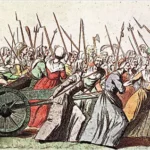The Making of an Icon: Pollock’s Journey
Jackson Pollock, forever etched in art history as “Jack the Dripper,” remains a captivating enigma. Born in Cody, Wyoming, in 1912, his early life amidst the stark landscapes of the American West offered little hint of the artistic revolution he would ignite. Yet, this restless young man, marked by frequent moves and a simmering internal energy, would reshape the very fabric of 20th-century art. His journey, from the rugged terrain of his youth to the bustling art scene of New York City, is a narrative of transformation, a testament to the unpredictable currents of creative genius. [https://www.lolaapp.com/jamaican-folk-song-about-overnight-labor] At the Art Students League in New York, he encountered the potent influence of muralists like José Clemente Orozco and David Alfaro Siqueiros, the latter introducing him to the dynamic possibilities of liquid paint – a pivotal moment that foreshadowed his revolutionary drip technique.
Controlled Chaos: Deciphering the Drip
Pollock’s signature technique, far from mere “dripping,” was a carefully choreographed ballet of motion and color. Imagine him, not before a traditional easel, but circling a canvas spread across the floor, his body a conduit for creative energy. Sticks, hardened brushes, even basting syringes became his tools, extensions of his artistic will. He poured, flung, and dripped paint, often commercial enamel house paint, embracing the interplay of gravity, viscosity, and chance. This dynamic interplay, termed “action painting,” captured the raw, unfiltered impulses of the subconscious, transforming the canvas into a vibrant arena of gestural expression. While Time magazine’s moniker “Jack the Dripper” initially carried a note of derision, it ultimately became synonymous with Pollock’s radical departure from convention. [https://www.lolaapp.com/knight-of-pentacles-as-feelings] His “all-over” compositions, where every inch of the canvas pulsates with life, challenged the traditional hierarchy of foreground and background, creating a unified field of visual energy.
The Genesis of a Style: Influences and Inspirations
Pollock’s artistic vocabulary was shaped by a confluence of influences, from the rhythmic patterns of Native American sand painting to the fluid gestures of Eastern calligraphy. Some scholars suggest the controversial influence of Janet Sobel’s all-over drip paintings, a point of ongoing debate among art historians. His engagement with psychoanalysis during this period further suggests a link between his art and the exploration of the subconscious. The drip technique, therefore, can be interpreted as a visual manifestation of his inner world, a tangible record of his psychological landscape. The swirling lines and dynamic interplay of colors may offer glimpses into the artist’s psyche, inviting viewers to engage with the emotional undercurrents of his work.
Pollock’s Place in the Pantheon: Abstract Expressionism and Beyond
Pollock didn’t just innovate; he detonated a revolution in the art world. He emerged as a leading figure in Abstract Expressionism, a movement that shifted the epicenter of artistic gravity from Paris to New York. His rejection of representational imagery and his embrace of abstraction challenged the very definition of painting. Initial critical responses ranged from bewilderment to outright dismissal, with some deriding his work as “mere splashing.” Yet, Pollock’s influence proved undeniable. He irrevocably altered the trajectory of modern art, paving the way for generations of artists to explore the expressive potential of abstraction and the power of the gestural mark. His legacy continues to resonate in the soaring auction prices of his works and the ongoing scholarly discussions surrounding his life and art.
A Closer Look: Key Works and Their Significance
| Artwork | Year | Significance |
|---|---|---|
| Number 5, 1948 | 1948 | Exemplifies his mature drip technique, demonstrating the complex interplay of color, line, and texture. Holds a prominent place in art history and the art market. |
| Mural | 1943 | Commissioned by Peggy Guggenheim, this monumental work marks a pivotal moment in his artistic development, foreshadowing the all-over compositions of his later drips. |
| Lavender Mist | 1950 | Reveals the intricate layering and dynamism of his drip technique, offering a glimpse into the artist’s process and the evolution of his abstract forms. |
| Autumn Rhythm (Number 30) | 1950 | Captures the rhythmic and gestural qualities of his work, suggesting a connection to the natural world and the cyclical rhythms of life. |
| Blue Poles | 1952 | A late work showcasing his continued exploration of color and form, demonstrating a shift towards a more structured composition while retaining his signature energy. |
| Composition with Pouring II | 1943 | Originally considered a drip painting, closer examination reveals traditional brushwork, illustrating the complexity and evolution of Pollock’s technique. |
Deconstructing the Dripper: Myth, Media, and the Man
The “Jack the Dripper” nickname, while catchy, ultimately reduces a complex artist to a simplistic label. It’s essential to delve beyond the superficial and recognize the depth and intentionality behind Pollock’s process. He wasn’t just throwing paint; he was engaging in a dynamic dialogue with the canvas, exploring the boundaries of artistic expression. His early influences, including Thomas Hart Benton, Pablo Picasso, and Joan Miró, are interwoven with the unique vision that propelled him to break from tradition and forge a new path. His wife, Lee Krasner, a significant artist in her own right, played a crucial role in supporting his career and navigating the often challenging art world. The evolution of the “Jack the Dripper” moniker, from a media-driven jab to an almost affectionate identifier, mirrors the changing perception of Pollock’s work. It underscores the power of media to shape artistic reputations and the often-complicated relationship between an artist, their work, and public perception. Further research continues to illuminate the nuances of Pollock’s technique, influences, and the psychological underpinnings of his art, suggesting that our understanding of this enigmatic figure will likely continue to evolve.
- Unlock Elemental 2 Secrets: Actionable Insights Now - April 2, 2025
- Lot’s Wife’s Name: Unveiling the Mystery of Sodom’s Fall - April 2, 2025
- Photocell Sensors: A Complete Guide for Selection and Implementation - April 2, 2025
















